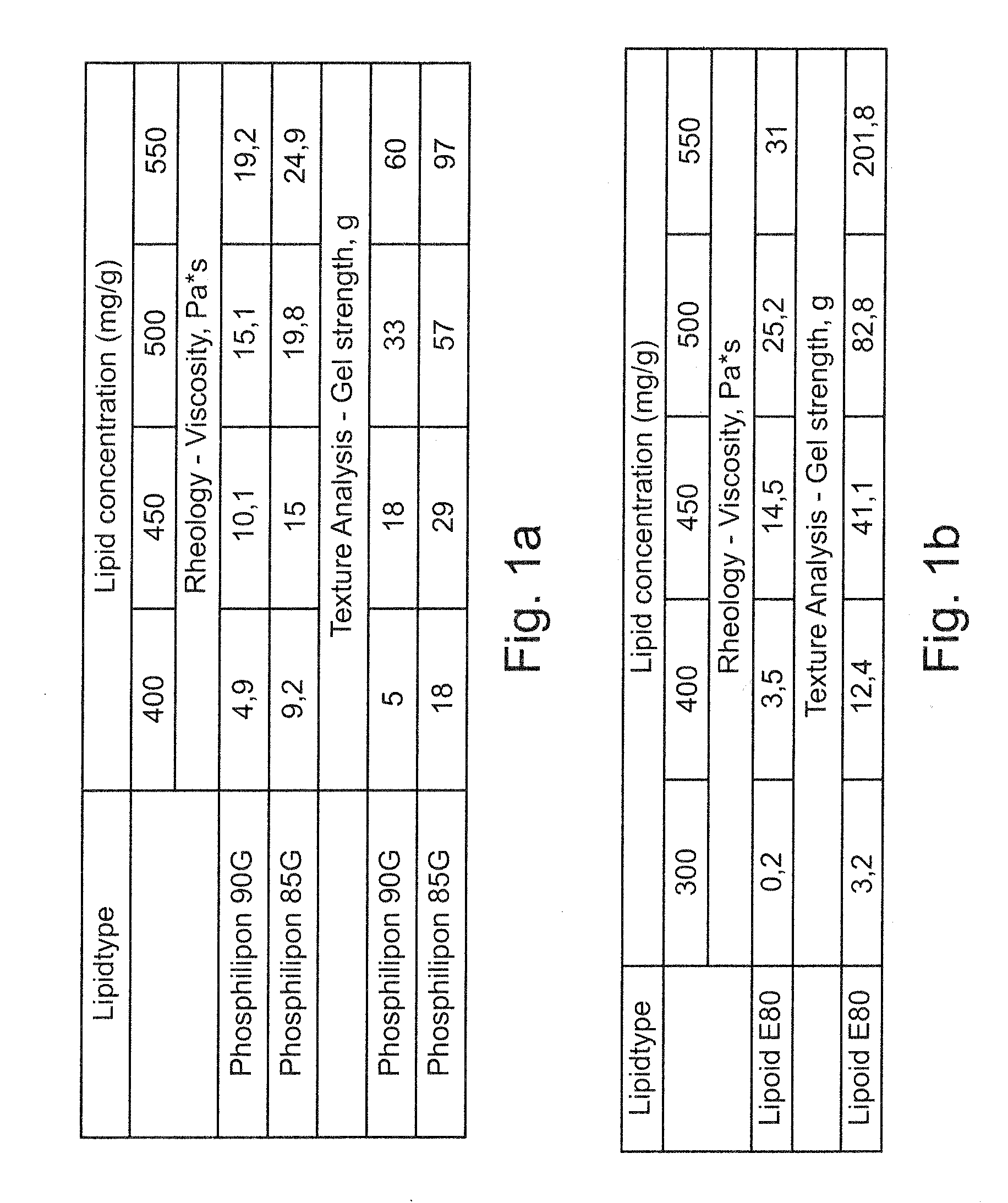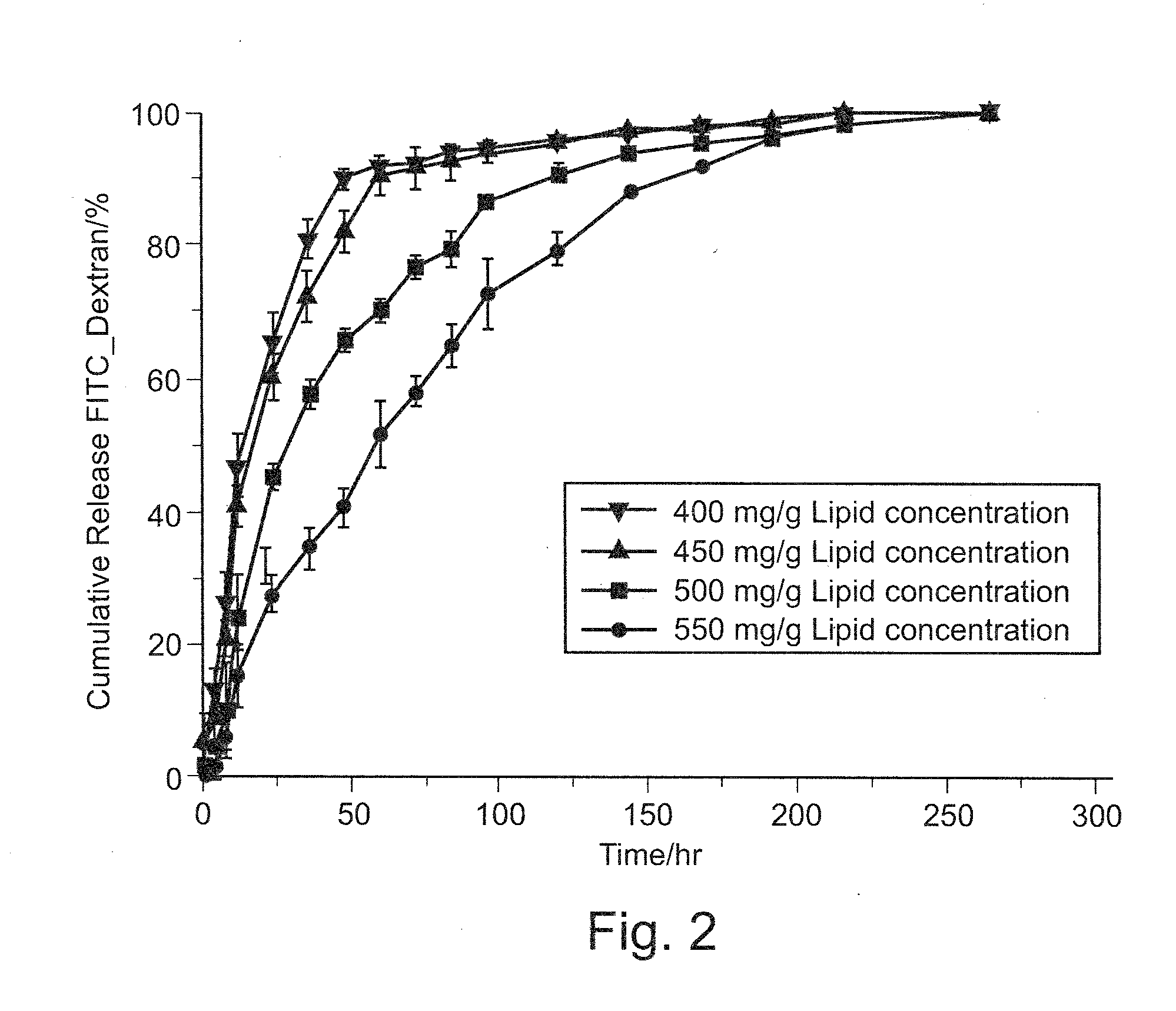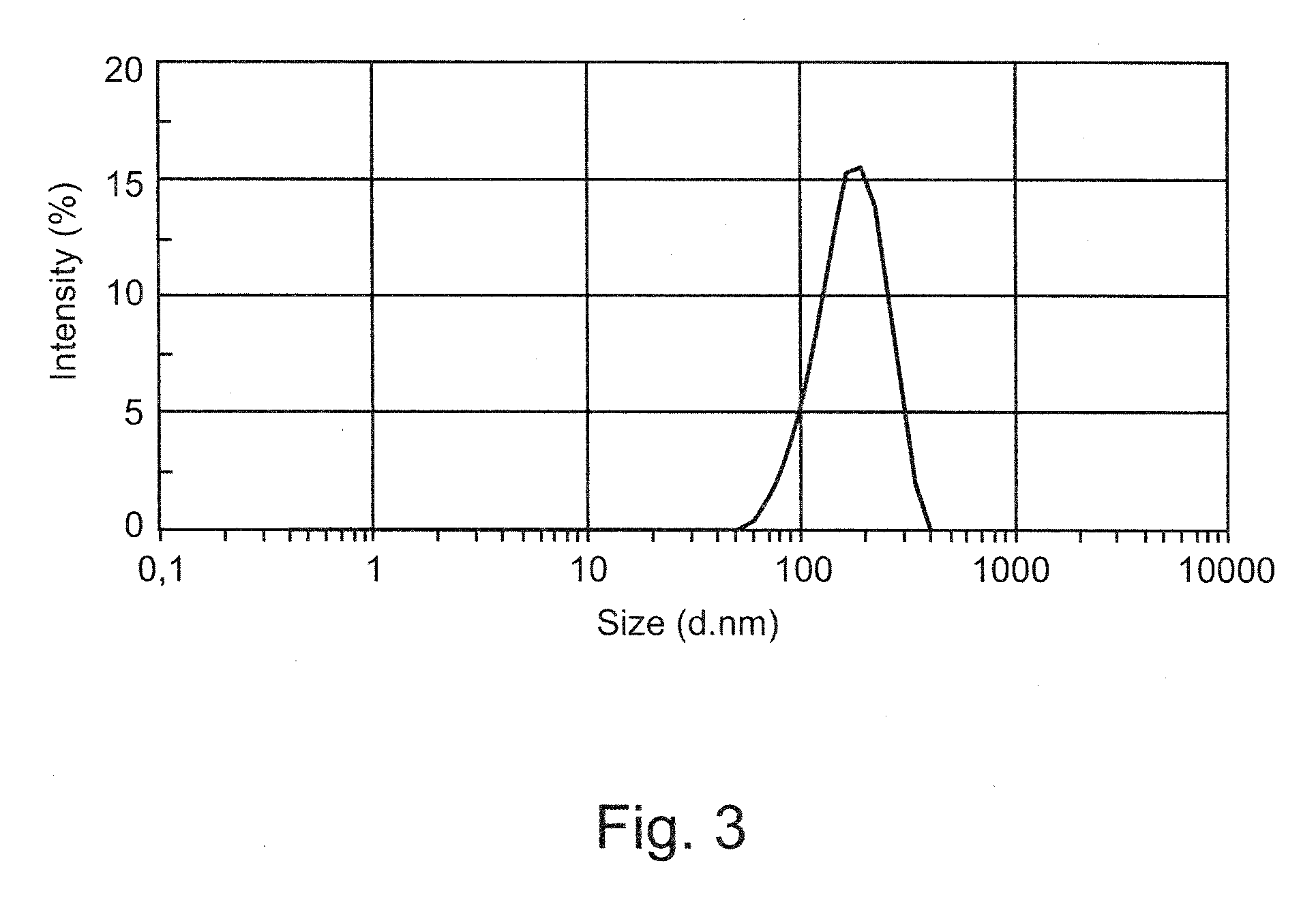Vesicular phospholipid gels comprising proteinaceous substances
a technology of phospholipid gels and proteins, applied in the direction of peptide sources, peptide/protein ingredients, antibody medical ingredients, etc., can solve the problems of low bioavailability and instability of proteinaceous substances, and the formulation of biologically active compounds is difficult, so as to prevent the rejection of transplanted organs, stimulate selective tissue regeneration, and reduce the normal immune response
- Summary
- Abstract
- Description
- Claims
- Application Information
AI Technical Summary
Benefits of technology
Problems solved by technology
Method used
Image
Examples
example 1
[0194]Preparation of Vesicular Phospholipid Gels (VPGs) by Asymmetric Centrifugation
[0195]In the following, a Speedmixer® of the type DAC 150 FVZ, Hausschild, Hamm, Germany having a counter-rotation ratio of about 4.2:1 has been used to provide the compositions exemplified herein. Unless stated otherwise, the method for the production of the inventive compositions is based on the preparation methods disclosed in EP 1 674 081 which were revised and improved as follows:
[0196]Directly after weighing of the constituents of the preparation (lipids, at least one proteinaceous substance and an aqueous compound), the homogenization was performed in the dual asymmetric centrifuge in multiples of 9 minutes.
[0197]However, proteinaceous substances such as proteins are known to adsorb on different kind of surfaces. In order to avoid protein loss due to adsorption on glass beads the preparation of the compositions was performed without using any homogenization aid such as glass beads (EP 1 674 08...
example 2
[0200]Rheology and Texture Analysis
[0201]The rheology behavior of the inventive compositions was studied by a rotational viscometer. Test system: PP 50, rotation plate; Temperature: 25° C.; Shear rate: 10-100 l / s. The viscosity data of different compositions at a shear rate of 37.9 l / s were used for evaluation. In addition to rheology, texture analysis was carried out. Compared to rheology measurements texture analysis is a less time consuming, simple way with less sample amount to predict the viscosity of the gels. Texture analysis (TA. XT plus, Stable Micro Systems, UK) of the compositions was performed with a microprobe of 4 mm in a gel volume of 1.5 ml. The test speed was set to 0.50 mm / s, and the test distance was 4.000 mm. The gel strength of the VPGs were measured and represented as the maximal force by the average of 3 parallels.
[0202]To evaluate the influence of different lipid types and different lipid concentrations, the compositions were prepared either with Phospholipon...
example 3
[0206]Release of a Macromolecular Model Drug
[0207]In order to evaluate the potential of the inventive compositions for the sustained release of proteins and other proteinaceous substances, the model drug FITC-Dextran (40 kDa) was encapsulated in VPGs. For assessment of the in vitro release of drug from the inventive VPG-formulations a test method based on a custom-made flow-through cell, as reviewed by M. Brandl and U. Massing in “Liposomes—a practical approach”, V. P. Torchilin and V. Weissing, Ed., 2nd edition (2003), was established.
[0208]An acceptor medium (buffered aqueous medium) is run through the cell at a rate of 1 ml / h (The flow rate is 10 ml / hr in the original method. However, the flow rate is reduced due to the detection need.) to mimic the flow of tissue fluid at the site of injection or implantation of the composition. Fractions collected over distinct time intervals were analyzed for the macromolecular model drug concentration by fluorescence photometry. Thereby, the ...
PUM
| Property | Measurement | Unit |
|---|---|---|
| viscosity | aaaaa | aaaaa |
| pressure | aaaaa | aaaaa |
| pressure | aaaaa | aaaaa |
Abstract
Description
Claims
Application Information
 Login to View More
Login to View More - R&D
- Intellectual Property
- Life Sciences
- Materials
- Tech Scout
- Unparalleled Data Quality
- Higher Quality Content
- 60% Fewer Hallucinations
Browse by: Latest US Patents, China's latest patents, Technical Efficacy Thesaurus, Application Domain, Technology Topic, Popular Technical Reports.
© 2025 PatSnap. All rights reserved.Legal|Privacy policy|Modern Slavery Act Transparency Statement|Sitemap|About US| Contact US: help@patsnap.com



